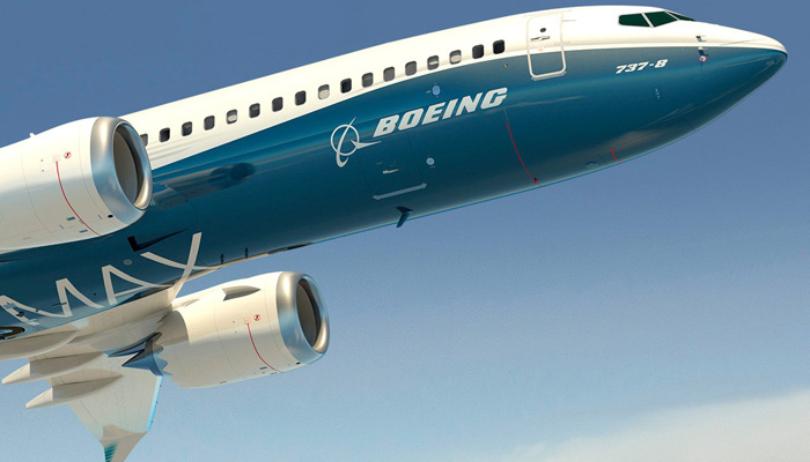Before any more time goes by I want to call your attention to something not directly Trump related — “Crash Course: How Boeing’s Managerial Revolution Created the 737 Max Disaster” by Maureen Tkacik at New Republic. It’s a bit long, but very much worth reading.
Basically, the 737 Max is the plane built by MBAs and financial experts instead of engineers; the fruit of popular business theory. The flaws are bigger than just glitchy software. The creation of the plane from inception to crash was marked by corner-cutting and disregard for engineering and production skill.
Here, a generation after Boeing’s initial lurch into financialization, was the entirely predictable outcome of the byzantine process by which investment capital becomes completely abstracted from basic protocols of production and oversight: a flight-correction system that was essentially jerry-built to crash a plane. “If you’re looking for an example of late stage capitalism or whatever you want to call it,” said longtime aerospace consultant Richard Aboulafia, “it’s a pretty good one.”
The glitchy software — mostly written in “coding sweatshops” in India by coders making $9 an hour — was necessary to correct the airplane’s awkward build, which was awkward because Boeing refused to pay for a thorough re-design but basically put big new engines on an older plane model designed for smaller engines.
This alteration created a shift in the plane’s center of gravity pronounced enough that it raised a red flag when the MAX was still just a model plane about the size of an eagle, running tests in a wind tunnel. The model kept botching certain extreme maneuvers, because the plane’s new aerodynamic profile was dragging its tail down and causing its nose to pitch up. So the engineers devised a software fix called MCAS, which pushed the nose down in response to an obscure set of circumstances in conjunction with the “speed trim system,” which Boeing had devised in the 1980s to smooth takeoffs.
Why not start over and redesign the plane instead of relying on a patch?
Abuzz with new ideas about factories to sell and components to outsource, Boeing was hemorrhaging market share to Airbus, and even the newest Jack Welch protégé on the board, James McNerney, was pushing for a new plane. Stonecipher and John McDonnell, who seemed almost irrationally intent on the Salieri-style project of seeing Boeing fail at the enterprise that had done in his own family business, issued what Sorscher called a “medieval” ultimatum: Develop the plane for less than 40 percent of what the 777 had cost to develop 13 years earlier, and build each plane out of the gate for less than 60 percent of the 777’s unit costs in 2003. The board ultimately approved a development budget, estimated by those in the industry to be $7 billion, for a project labeled at the time as the 7E7—later to be known as the 787—but that figure came with a huge asterisk, because managers promised the board they would require subcontractors to foot the majority of costs.
As in many other kinds of businesses, the smart guys running Boeing believed in saving money through outsourcing. Functions that used to be in-house were given to lowest bidders. Everything but “design, final assembly, and flight testing and sales” was offshored or sent to non-union shops in the South somewhere.
Down in South Carolina, a nonunion Boeing assembly line that opened in 2011 had for years churned out scores of whistle-blower complaints and wrongful termination lawsuits packed with scenes wherein quality-control documents were regularly forged, employees who enforced standards were sabotaged, and planes were routinely delivered to airlines with loose screws, scratched windows, and random debris everywhere. The MCAS crash was just the latest installment in a broader pattern so thoroughly ingrained in the business news cycle that the muckraking finance blog Naked Capitalism titled its first post about MCAS “Boeing, Crapification and the Lion Air Crash.”
It goes on and on. The people in charge of Boeing knew nothing about airplanes, just money. “Airplane manufacturing is no different from mortgage lending or insulin distribution or make-believe blood analyzing software—another cash cow for the one percent, bound inexorably for the slaughterhouse.” Their big obsession was getting maximum profit out of net assets such as factories, warehouses, office buildings, etc. If a physical asset was seen as a cost, the soluton was to sell it and outsource the functions. Engineering staffs were cut to the bone, then cut some more. The people in charge never seemed to have asked how this would affect the quality of their products. Maybe they didn’t care.
Do I want to ever fly again? Not at the moment. However, nothing in this surprises me. I saw the same thing in the book publishing industry; so many functions are outsourced that it’s now common for books to be published without anyone on the publisher’s full-time staff ever reading them. But bad books are not going to kill people, as a rule.
In response to this article, John Cole wrote,
This blog has been around for awhile, so I inevitably repeat myself from time to time, but I want to say it again. Whenever someone does the whole time travel/kill baby Hitler thing, I always say to myself, “To hell with Hitler, I’d go back and kill whoever was responsible for the first MBA program.” We beat Hitler and recovered nicely, and he never did near as much damage to the country as our current profits over people management.
Beoing is still talking about getting its 737 Maxes back in the air in time for the Christmas travel season. If they do, and you need to fly somewhere, good luck. For that matter, other Boeing 737 planes recently were found to have cracks in the pickle forks, which attach the plane’s body to its wing structure. Amtrak is looking better all the time.

